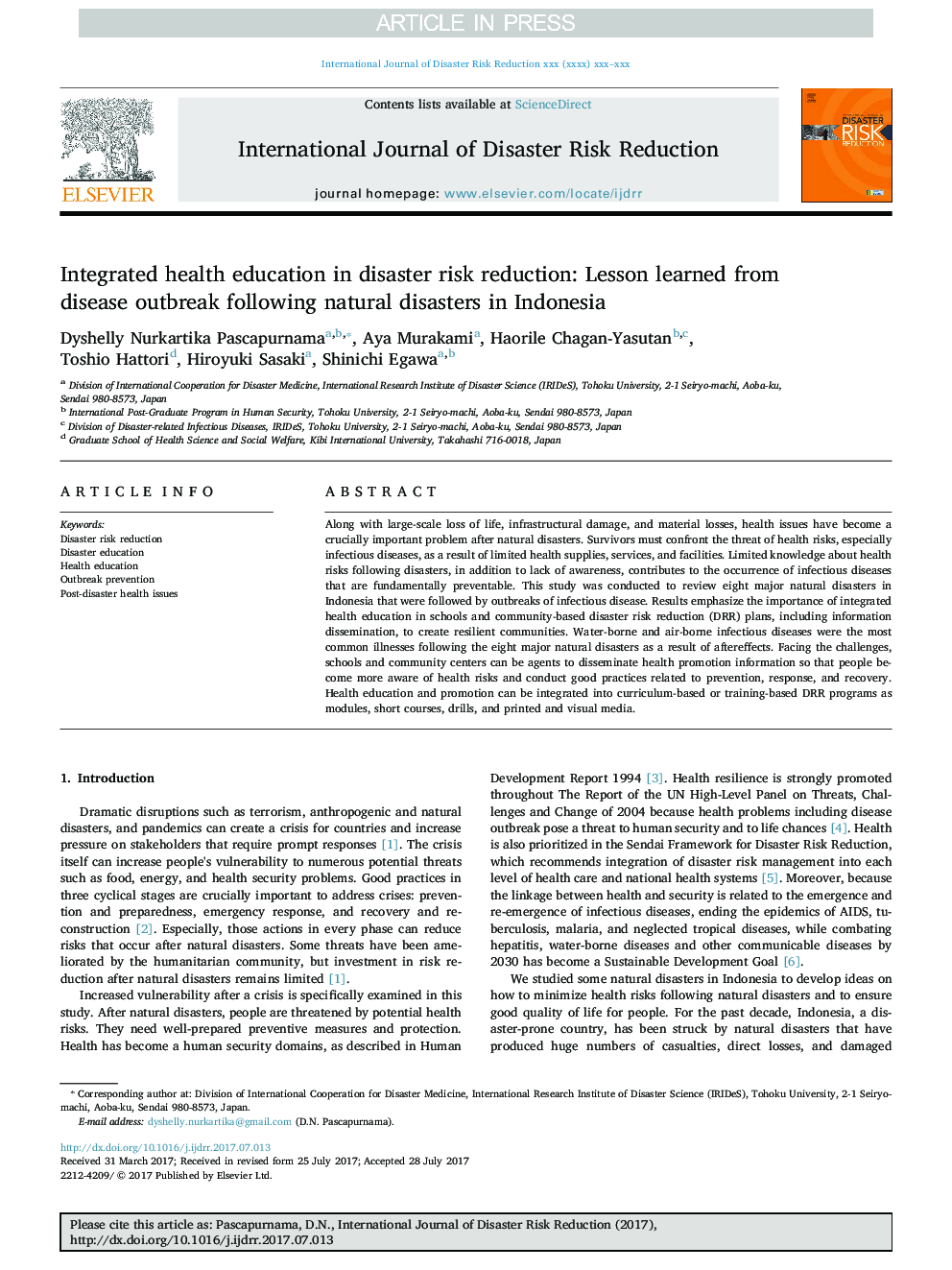| Article ID | Journal | Published Year | Pages | File Type |
|---|---|---|---|---|
| 7471433 | International Journal of Disaster Risk Reduction | 2018 | 9 Pages |
Abstract
Along with large-scale loss of life, infrastructural damage, and material losses, health issues have become a crucially important problem after natural disasters. Survivors must confront the threat of health risks, especially infectious diseases, as a result of limited health supplies, services, and facilities. Limited knowledge about health risks following disasters, in addition to lack of awareness, contributes to the occurrence of infectious diseases that are fundamentally preventable. This study was conducted to review eight major natural disasters in Indonesia that were followed by outbreaks of infectious disease. Results emphasize the importance of integrated health education in schools and community-based disaster risk reduction (DRR) plans, including information dissemination, to create resilient communities. Water-borne and air-borne infectious diseases were the most common illnesses following the eight major natural disasters as a result of aftereffects. Facing the challenges, schools and community centers can be agents to disseminate health promotion information so that people become more aware of health risks and conduct good practices related to prevention, response, and recovery. Health education and promotion can be integrated into curriculum-based or training-based DRR programs as modules, short courses, drills, and printed and visual media.
Related Topics
Physical Sciences and Engineering
Earth and Planetary Sciences
Geophysics
Authors
Dyshelly Nurkartika Pascapurnama, Aya Murakami, Haorile Chagan-Yasutan, Toshio Hattori, Hiroyuki Sasaki, Shinichi Egawa,
